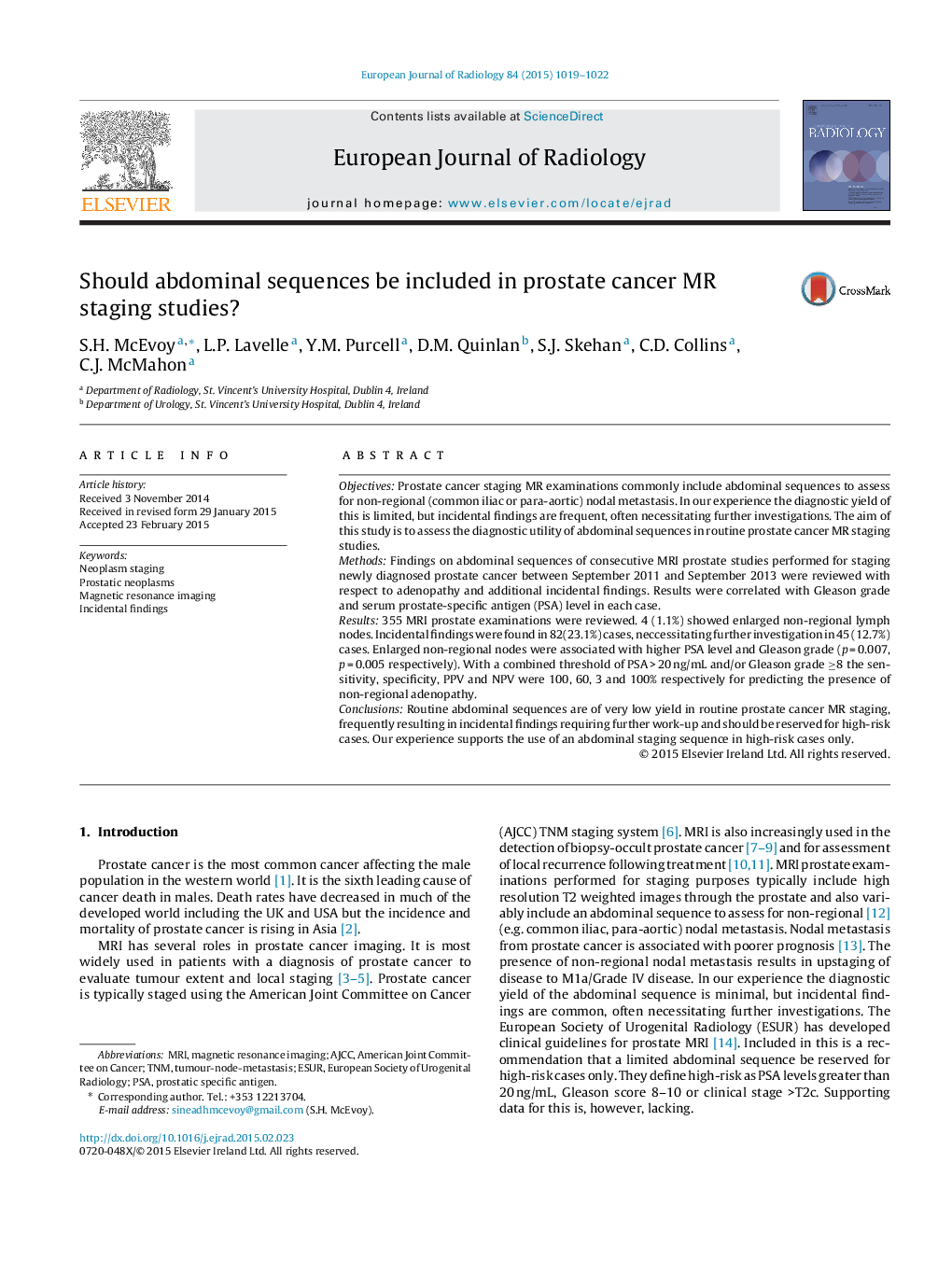| Article ID | Journal | Published Year | Pages | File Type |
|---|---|---|---|---|
| 4225096 | European Journal of Radiology | 2015 | 4 Pages |
•ESUR guideline that abdominal MR sequences are reserved for high-risk prostate cancer is tested.•Routine abdominal sequences are of low yield in prostate cancer MR staging.•Routine abdominal staging sequences frequently result in incidental findings.•Abdominal staging sequences should be reserved for high-risk prostate cancer cases.
ObjectivesProstate cancer staging MR examinations commonly include abdominal sequences to assess for non-regional (common iliac or para-aortic) nodal metastasis. In our experience the diagnostic yield of this is limited, but incidental findings are frequent, often necessitating further investigations. The aim of this study is to assess the diagnostic utility of abdominal sequences in routine prostate cancer MR staging studies.MethodsFindings on abdominal sequences of consecutive MRI prostate studies performed for staging newly diagnosed prostate cancer between September 2011 and September 2013 were reviewed with respect to adenopathy and additional incidental findings. Results were correlated with Gleason grade and serum prostate-specific antigen (PSA) level in each case.Results355 MRI prostate examinations were reviewed. 4 (1.1%) showed enlarged non-regional lymph nodes. Incidental findings were found in 82(23.1%) cases, neccessitating further investigation in 45 (12.7%) cases. Enlarged non-regional nodes were associated with higher PSA level and Gleason grade (p = 0.007, p = 0.005 respectively). With a combined threshold of PSA > 20 ng/mL and/or Gleason grade ≥8 the sensitivity, specificity, PPV and NPV were 100, 60, 3 and 100% respectively for predicting the presence of non-regional adenopathy.ConclusionsRoutine abdominal sequences are of very low yield in routine prostate cancer MR staging, frequently resulting in incidental findings requiring further work-up and should be reserved for high-risk cases. Our experience supports the use of an abdominal staging sequence in high-risk cases only.
